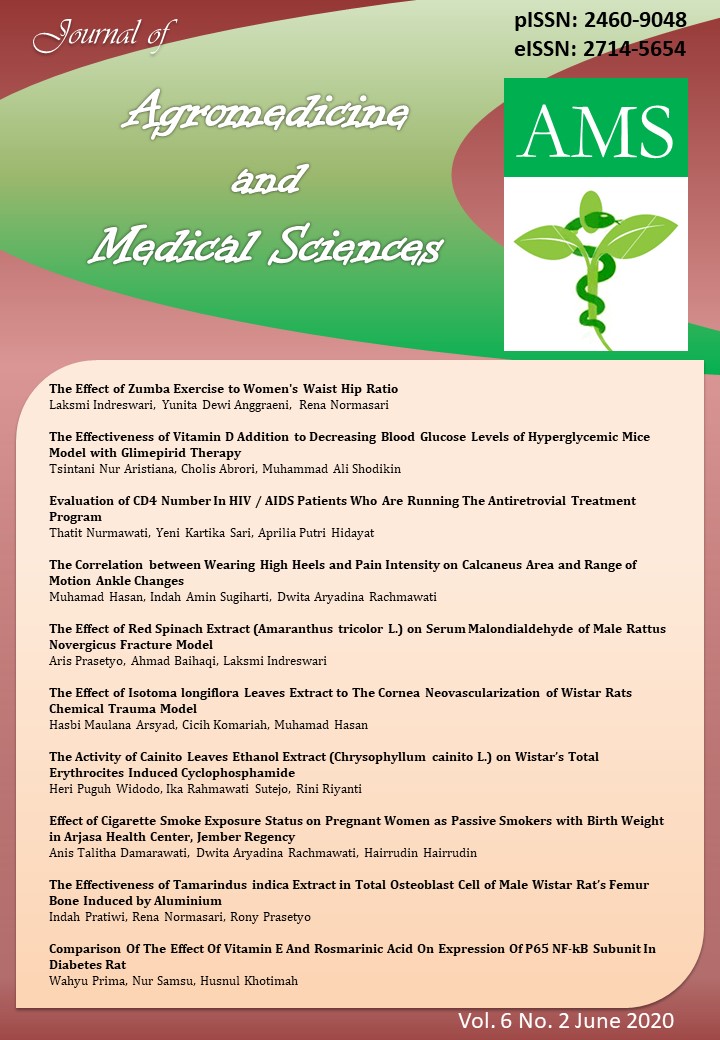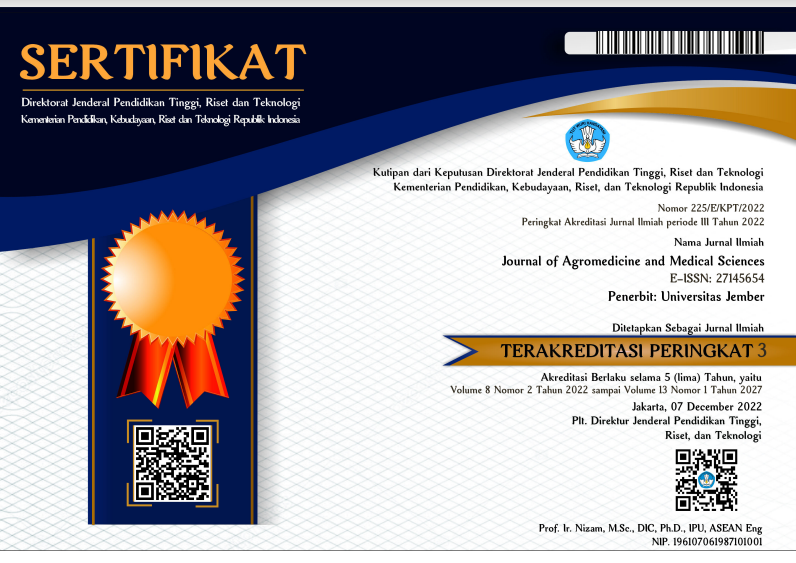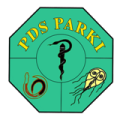The Effect of Isotoma longiflora Leaves Extract to The Cornea Neovascularization of Wistar Rats Chemical Trauma Model
DOI:
https://doi.org/10.19184/ams.v6i2.6853Abstract
Eye chemical trauma was an eye trauma caused by a substance with a pH<7 (acid) and pH>7 (alkali). Chemical trauma can be caused by pesticides. In Indonesia, 78.9% of farmers had eye complaints due to pesticides exposure. The occurrence of alkali chemical trauma of eye could cause cornea neovascularization (CNV). Alkali chemical trauma caused intense inflammation resulting a vascularization of the cornea that was supposed to be avascular. The purpose of this study was to find out the effect of Isotoma longiflora leaves extract the cornea neovascularization of wistar rats chemical trauma model. This research used true experimental design method with post-test only controlled group design. The sample of this study were 30 male wistar rats (Rattus norvegicus) divided into six groups, 1 positive control group (dexamethasone 0.1%), 1 negative control group (DMSO 0,1%), and 4 treatment groups of Isotoma longiflora leaves extract (0.25 mg/ml, 0.5 mg/ml, 1 mg/ml, 2 mg/ml). The result of Shapiro-Wilk and Levene's test showed that p>0.05 that means the data was normally distributed and has the same variant. One Way ANOVA test results obtained significant differences between groups on the 7th day (p=0.001). The result of Post Hoc LSD test showed that group P3 and P4 were significantly different to negative control, P1 and P2 groups. P3 and P4 groups with 1 mg/ml and 2 mg/ml Isotoma longiflora leaves extract could inhibit cornea neovascularization.






















